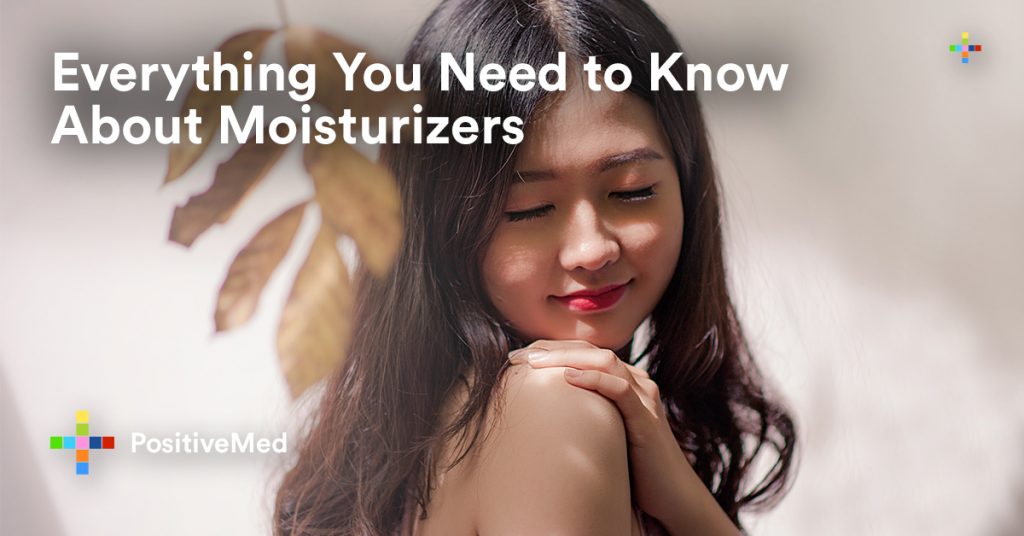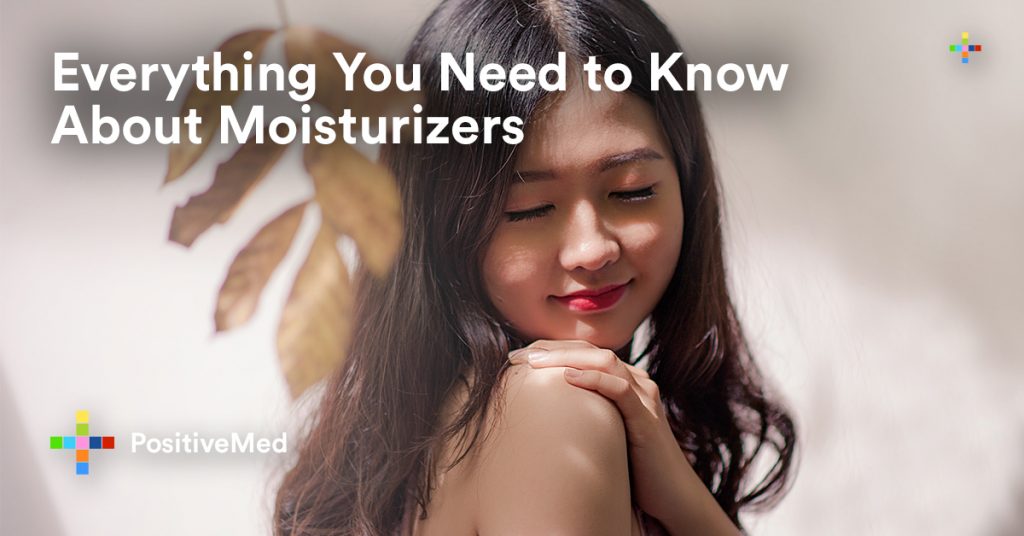Heading into the season of dry, cooler air means getting smart about moisturizing and hydrating skin. When it comes to identifying your skin type and finding the right moisturizers, however, you may be at a loss. Don’t miss this essential guide to moisturizing!

When it comes to ingredients, there are four different categories of moisturizers, including:
Occlusives
These heavy-duty moisturizers go to work “sealing” in hydration for the skin and are typically most effective for the body and not the face. Often greasy feeling, these types of moisturizers are not absorbed into the skin as much as they sit on the surface of the skin.
Oil-based ingredients are made of hydrocarbons
Ceramides
The term ceramides actually refer to naturally occurring lipid molecules, waxy in nature, that reinforce cells membranes and make up the outermost layer of human skin, the stratum corneum of the epidermis. Ceramide partners with cholesterol and saturated fatty acids to form the protective sheath around your skin that prevents the loss of too much water through evaporation as well as to keep out microorganisms. Some moisturizers will contain ceramides to help you replenish dry and damaged skin caused by depleted ceramide levels.
Emollients
This combination moisturizer is composed of many ingredients which serve to keep skin springy and hydrated. When the body loses moisture in the dry air, for example, tiny spaces and gaps open up between cells on the surface of the skin.
They may become damaged or die off, causing skin to flake and crack. Emollients go about filling in the empty spaces between cells to bind them and make skin more pliable. Common emollients used in moisturizers include shea butter, cocoa butter, paraffin, mineral oil, petrolatum, and beeswax.
Humectants
Humectants are a biochemical substance with an affinity for attracting and absorbing environmental moisture. This category of moisturizer also aims to prevent water loss from the body, however, it’s key players include propylene glycol, alpha hydroxy acids (like lactic acid), honey, and aloe vera gel. Commonly used in cosmetics as well, humectants have less oil in them than other moisturizers and do a good job of drawing water to the skin.
What’s the difference between creams, lotions, butters, and ointments?
When it comes to finding the perfect moisturizer for your skin, you might be staring down a drugstore aisle a mile long. Don’t fret! Understanding the difference between types of moisturizers can help.
Generally speaking, ointments are 20% water and 80% oil while creams are a 50/50 split oil and water. Lotions are most similar to creams, sometimes offering a higher water to oil ratio so as to not be too thick and heavy. Body butter are extremely thick and typically contain little to no water, instead of using a combination of carrier oils and natural butter extracted from the fats of essential ingredients like mango, palm, and shea.
What’s the best moisturizer for my skin type?
While nailing down the different types of moisturizers and vehicles through which they carry important hydrating ingredients for your skin is important, your choice may still depend on your skin type and environment.
Oily – oily skin often looks, well, oily. Oftentimes developing a sheen after washing, oily skin will also reveal larger pores.
Use moisturizers with little to no oil that incorporate humectants into the ingredients as they will help draw moisture to the skin while balancing oil levels.
Dry – tight skin that is often times red, flaky, dusty, or itchy is void of the moisture it needs to stay hydrated and healthy.
Related Link: How to Use Ginger for Hair and Skin Imperfections
Dehydrated skin should be exfoliated to remove dead and damaged skin cells, and then moisturized with rich, emollient-based lotions that help reinforce the cell matrix of your skin.
Combination – rough patches of minimal dryness on the skin coupled with oily t-zones and other areas reveals tricky combination skin.
Combination skin can benefit from ceramide-based moisturizing products that replenish the dry areas but also balance out the oily zones. You may try a combination of two moistures on different areas of skin.
Neutral – a normal skin tone that is neither overly dry or overly oily can still benefit from daily moisturizing.
A more basic moisturizer that is a balance of oil and water, like one with ceramides, can lock in moisture without over-saturating the skin.
Bonus tip: Using moisturizers formulated with SPF helps to keep skin hydrated as well as protect it from sun damage during the day.
What’s the best time to apply moisturizers?
Believe it or not, there is a right and wrong time to apply moisturizer to your face and body. Experts agree that right after you shower is a crucial time for hydrating skin. Why?
Well when you hop out of the shower and towel off, the leftover water on your skin starts to naturally evaporate, leaving skin dehydrated and even itchy. Moisturizing right away will help lock in those water molecules to keep skin healthy, rejuvenated, and hydrated. It’s easy to slap motion on and massage it into your legs, feet, arms, and torso, but what about your back? Moisturizing with back lotion applicators does the trick for hitting hard to reach spots – for back lotion applicators, refer to this site.
You may even want to consider exfoliating or dry brushing prior to a shower. Exfoliating helps to scrub and slough away dead and damaged skin cells as well as built-up impurities, essentially priming your body to better absorb moisturizers. Avoid over-exfoliating, however, as it can stimulate unwanted oil production and even worsen some skin conditions.
Bottomline
When it comes to moisturizing, you may want to flip the bottle over that you’re currently using to check out what ingredients and oil/water ratio it has. Not only will smart moisturizing benefit your overall appearance by minimizing pores and fine lines, it’ll help keep your skin healthy, hydrated, and glowing as well, no matter the season.







